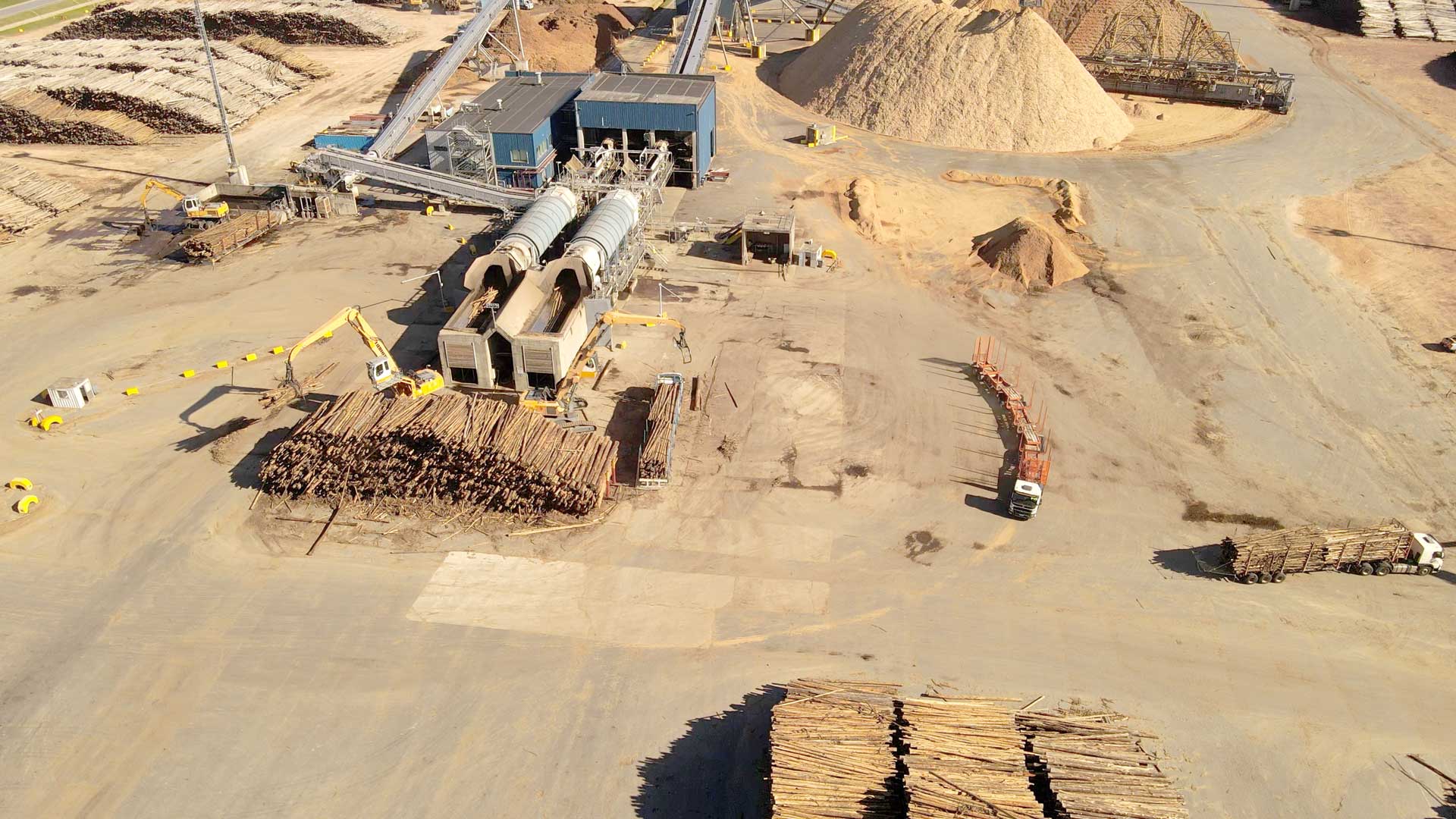
Understanding Hog Fuel: Lumber’s Eco-Solution
What Is Hog Fuel?
 Hog fuel is a term used in the lumber industry to describe a specific kind of wood waste that is used as the feed material for biomass powered plants. This waste includes bark, sawdust, planer shavings, wood chips, and other by-products of the lumber milling process. This process prevents having to send the material to landfill for disposal and promotes environmental sustainability and a lower carbon footprint.
Hog fuel is a term used in the lumber industry to describe a specific kind of wood waste that is used as the feed material for biomass powered plants. This waste includes bark, sawdust, planer shavings, wood chips, and other by-products of the lumber milling process. This process prevents having to send the material to landfill for disposal and promotes environmental sustainability and a lower carbon footprint.
The term “hog” refers to a machine called a “hogger,” which grinds wood waste into smaller pieces, but the process can also be accomplished with shredders and grinders designed for wood waste processing. The versatility of these machines may offer additional benefits to producers, due to the added range of products that can be processed and the finished material that is produced.
Composition and Production Process
The composition of hog fuel can vary based on the specific operations of a lumber mill but generally includes a mix of:
- Bark
- Sawdust
- Wood chips
- Planer shavings
The production process collects by-products from lumber processing, then uses a hogger machine to grind them into uniform pieces for burning or more processing.
Applications In The Lumber Industry
In the lumber industry, companies mainly use hog fuel as a biofuel to run machinery, produce heat that is used in the drying process and to make pulp and paper. Its uses include:
Energy Production
Many lumber mills burn hog fuel in co-gen plants to reduce waste and produce heat and electricity more efficiently.
Pulp & Paper Mfg
Hog fuel serves as a raw material in pulp mills, where it is used in the kraft pulping process to create paper products.
Mulch & Landscaping
Beyond industry, hog fuel is also used in landscaping, soil improvement, and erosion control.
Reasons Behind Its Production and Utilization
Several factors drive the production and utilization of hog fuel:
Waste Reduction
Utilizing wood waste as hog fuel helps lumber mills minimize waste, contributing to more sustainable and environmentally friendly practices.
Cost Efficiency
By converting waste products into energy or materials for further manufacturing, lumber mills can reduce operational costs associated with waste disposal and energy consumption.
Environmental Considerations
Being a renewable energy source, hog fuel helps reduce reliance on fossil fuels and lower carbon emissions in energy production and manufacturing processes.
How do you produce hog fuel?
Collection
The first step involves collecting wood waste materials from lumber processing activities. This waste includes bark, sawdust, wood chips, and other scraps of wood.
Size Reduction
The collected wood waste is then processed to reduce its size to create a more consistent and combustible product. Grinders, chippers, or hoggers typically perform this process. The aim is to produce small, uniform pieces that can burn efficiently in a boiler.
Screening
After grinding or chipping, the material may be screened to remove oversized pieces and other contaminants that could affect combustion. Screening ensures that only particles of the desired size go through to the boiler.
Drying
Depending on the moisture content of the hog fuel, it may need to be dried to improve its combustion efficiency. High moisture content can lower the fuel’s calorific value and make combustion less efficient. You can dry hog fuel naturally by allowing it to air dry or use mechanical means, such as rotary dryers, to achieve drying.
Storage
Once processed, silos or piles store the hog fuel until required for use. Proper storage is crucial to prevent moisture reabsorption and to ensure easy handling and feeding into the boiler.
Feeding
When needed for combustion, conveyor belts, augers, or pneumatic systems feed the hog fuel into the boiler. Efficient feeding mechanisms are vital to maintain steady combustion and to adjust the fuel supply according to the boiler’s demand.
Combustion
In the boiler, hog fuel combusts to generate heat. This heat produces steam, which can be used to generate electricity or heat the lumber mill and other industrial processes.
The processing and preparation of hog fuel are key to maximizing its energy potential and ensuring smooth and efficient operation of the boilers. Properly processed hog fuel can significantly reduce energy costs and environmental impact for lumber mills and other industries that utilize this renewable energy source.
Conclusion
Hog fuel is an environmentally and economically beneficial by-product of the lumber industry, used primarily for energy production and as a raw material in pulp and paper manufacturing due to its effective waste utilization and sustainable energy solutions.
Learn more about how Foreman Equipment can help your business confidently step into a future where hog fuel production is synonymous with energy independence and environmental sustainability, here.